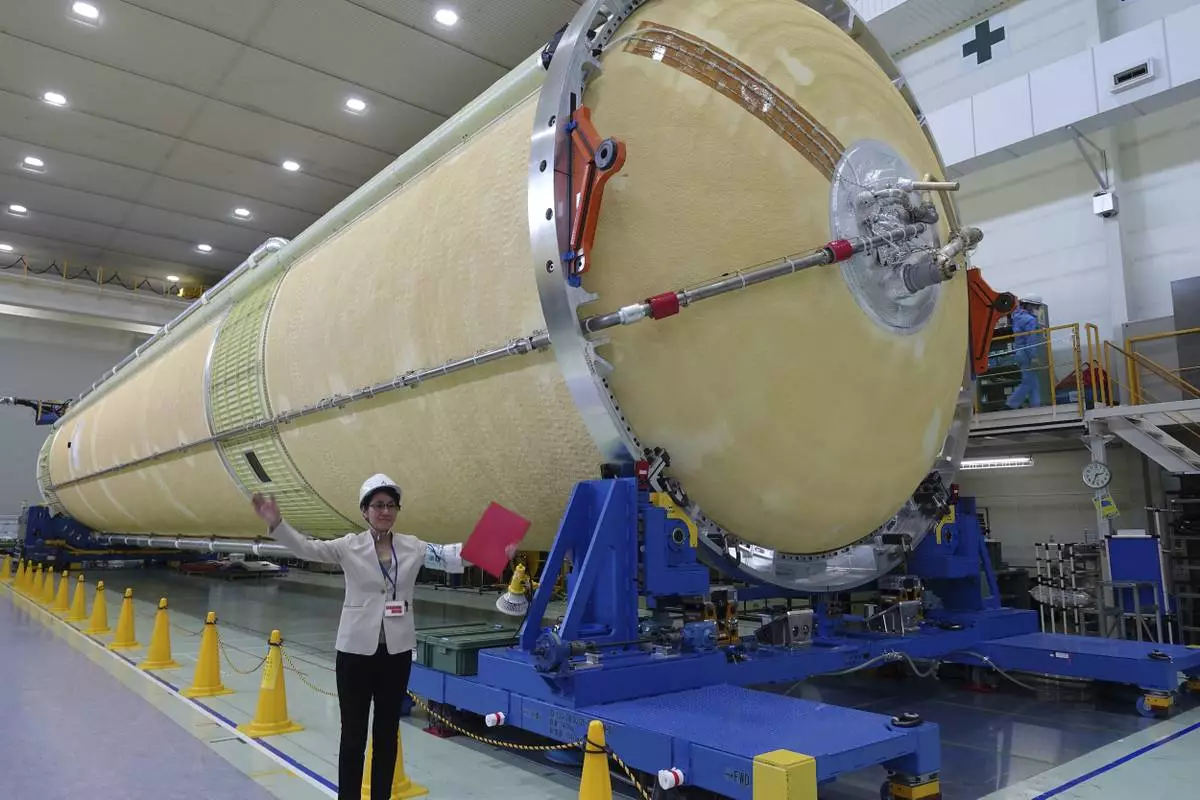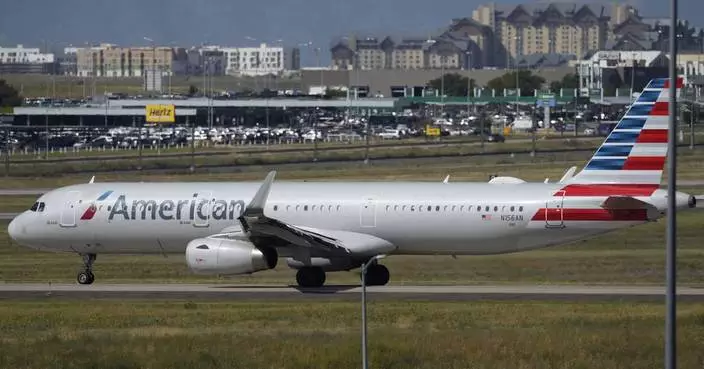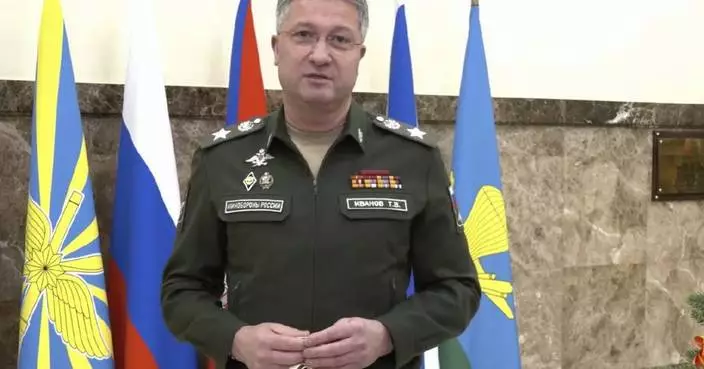Six decades after Sputnik, a refined version of the rocket that put the first artificial satellite in orbit remains the mainstay of Russia's space program — a stunning tribute to the country's technological prowess, but also a sign it has failed to build upon its achievements.
And unlike the Cold War era, when space was a key area of the rivalry between the United States and the Soviet Union, space research now appears to rank low on the Kremlin's priorities.
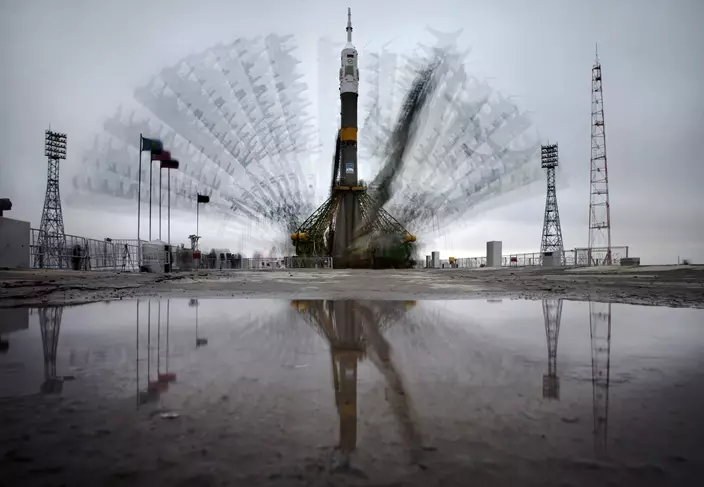
FILE In this file photo taken on Saturday, April 2, 2011, the scene as service towers lift to the Russian Soyuz TMA-21 space ship that will carry new crew to the International Space Station, ISS, at the launch pad in Russian leased Baikonur cosmodrome, Kazakhstan. Six decades after Sputnik opened the space era, Russia has struggled to build up on its Soviet-era space achievements and space research now ranks very low among the Kremlin's priorities.(AP Photo/Dmitry Lovetsky, File)
The Soyuz booster, currently the only vehicle that launches crews to the International Space Station, is a modification of the R-7 rocket that put Sputnik in orbit on Oct. 4, 1957.
Another Soviet-designed workhorse, the heavy-lift Proton rocket that has been used to launch commercial satellites to high orbits, was developed in the 1960s.
Both rockets established a stellar reputation for their reliability, but their record was tarnished by a string of failed launches in recent years that have called into question the Russian space industry's ability to maintain the same high standards of manufacturing.
Glitches found in Proton and Soyuz in 2016 were traced to manufacturing flaws at the plant in Voronezh that builds engines for both rockets. The Russian space agency, Roscosmos, sent more than 70 rocket engines back to production lines to replace faulty components, a move that resulted in a yearlong break in Proton launches.
The suspension eroded the nation's niche in the global market for commercial satellite launches. Last year, Russia for the first time fell behind both the U.S. and China in the number of launches.
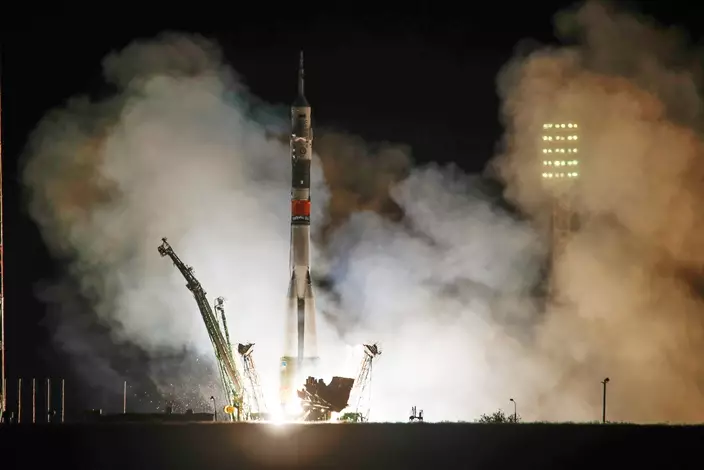
FILE- In this file photo taken on Wednesday, Sept. 13, 2017, The Soyuz-FG rocket booster with Soyuz MS-06 space ship carrying a new crew to the International Space Station, ISS, blasts off at the Russian leased Baikonur cosmodrome, Kazakhstan. Six decades after Sputnik opened the space era, Russia has struggled to build up on its Soviet-era space achievements and space research now ranks very low among the Kremlin's priorities. (AP Photo/Dmitri Lovetsky, File)
Clients have increasingly opted for new, more efficient and affordable choices, such as the Falcon 9 built by SpaceX, which broke ground in reducing costs by making its rockets reusable.
Russian officials have recognized the challenge posed by SpaceX and others, but they have offered few specifics on how the nation hopes to retain its place in the global market. The only short-term answer appears to be a plan to manufacture a less-powerful version of the Proton booster to lower costs.
In an astonishing recognition of the depth of Russia's space woes, Roscosmos chief Igor Komarov declared earlier this week that the Voronezh factory used substandard alloys because of a logistical failure that occurred after a warehouse worker had become ill.
The Khrunichev company that assembles the Proton also has fallen on hard times amid criminal investigations into alleged mismanagement and a decision to sharply cut its assets. Much of the prized real estate it occupies in western Moscow has been designated for development.
Meanwhile, the development of the Angara, a booster rocket intended to replace both the Soyuz and the Proton, has been repeatedly pushed back, and its future remains uncertain. More expensive and lacking the long-established track record of its predecessors, the Angara probably will find it hard to compete with SpaceX rockets and others in the international market.
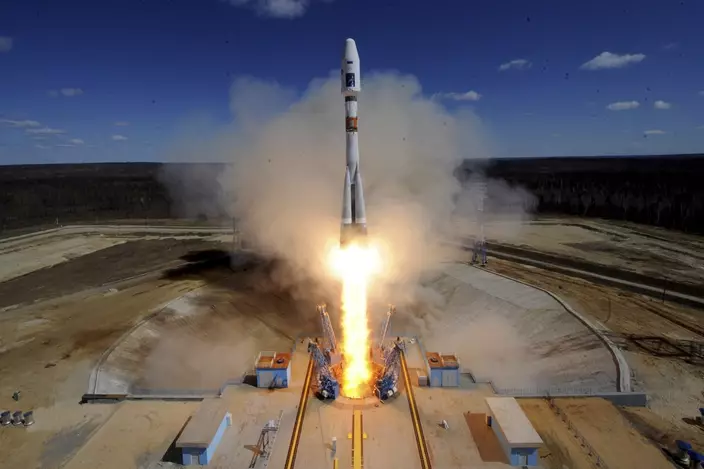
FILE- In this file photo taken on Thursday, April 28, 2016, A Russian Soyuz 2.1a rocket carrying Lomonosov, Aist-2D and SamSat-218 satellites lifts off from the launch pad at the new Vostochny Cosmodrome outside the city of Uglegorsk, about 200 kilometers (125 miles) from the city of Blagoveshchensk in the far eastern Amur region, Russia. Six decades after Sputnik opened the space era, Russia has struggled to build up on its Soviet-era space achievements and space research now ranks very low among the Kremlin's priorities. (Kirill Kudryavtsev/Pool Photo via AP, File)
The first tests of the Angara have been successful, but full-scale production is yet to be organized at a plant in the Siberian city of Omsk.
And while the Soyuz is now the only vehicle for ferrying crews to the International Space Station following the retirement of the U.S. space shuttle fleet, Russia stands to lose the monopoly soon as the SpaceX's Dragon v2 and Boeing's Starliner crew capsules are to fly test missions next year.
Work on a new spacecraft intended to replace the Soyuz crew capsule designed 50 years ago has crawled slowly. The ship, called Federation, is tentatively set for its first manned flight in 2023, but little is known about it.
Roscosmos also has talked about sending several unmanned missions to the moon in the next decade, but details are yet to be worked out. Attempts to send unmanned probes to Mars in 1996 and to the Martian moons Phobos in 2011 failed due to equipment problems.
Russia also has struggled for years to build its own scientific module for the International Space Station. Originally set for 2007, the launch of the Nauka, or Science, module has been pushed back repeatedly. A 2013 check revealed that its systems had become clogged with residue and required a costly cleaning. The launch is now tentatively set for next year, but some reports suggest it could be delayed further.
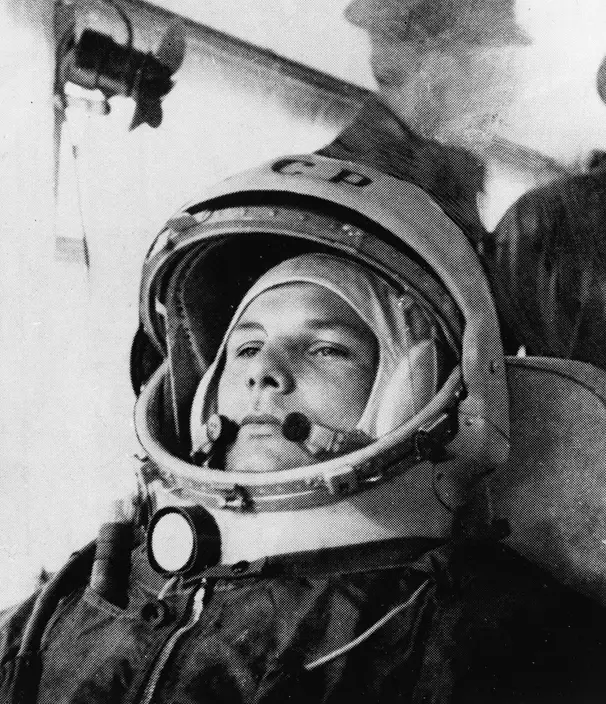
FILE - In this file undated photo, Soviet cosmonaut Major Yuri Gagarin, first man to orbit the earth, is shown in his space suit in this undated photo. On the 12th April 1961, the Russian cosmonaut became the first man in space when he orbited the Earth once during a 108 minute flight. Six decades after Sputnik opened the space era, Russia has struggled to build up on its Soviet-era space achievements and space research now ranks very low among the Kremlin's priorities. (AP Photo, File)
Amid funding shortages, Roscosmos has decided to cut the size of its ISS crews from three to two, a move criticized by many in Russia.
"It's very bad when we have to cut the number of cosmonaut seats," cosmonaut Svetlana Savitskaya said in parliament this year. "The situation in our space industry is quite alarming."
One Russian cosmonaut currently in orbit, Sergei Ryazanskiy, on Wednesday posted a picture of himself holding a tiny replica of Sputnik on Twitter to mark the 60th anniversary. Ryazanskiy's grandfather, the chief designer of radio guidance systems for space vehicles during Soviet times, was involved in Sputnik's launch.
While other space programs faced cutbacks, Russia spent billions to build the new Vostochny launch pad in the Far East as a possible alternative to the Baikonur cosmodrome in Kazakhstan that Moscow has leased from its former Soviet neighbor.
Many have questioned the feasibility of the expensive new facility, given the fact that Russia intends to continue using Baikonur for most of its launches. Work at Vostochny has also been dogged by scandals involving protests by unpaid workers and the arrests of construction officials accused of embezzlement.
A launch pad for Soyuz finally opened in 2016, but another one for heavier Angara rockets is only set to be completed in late 2021.
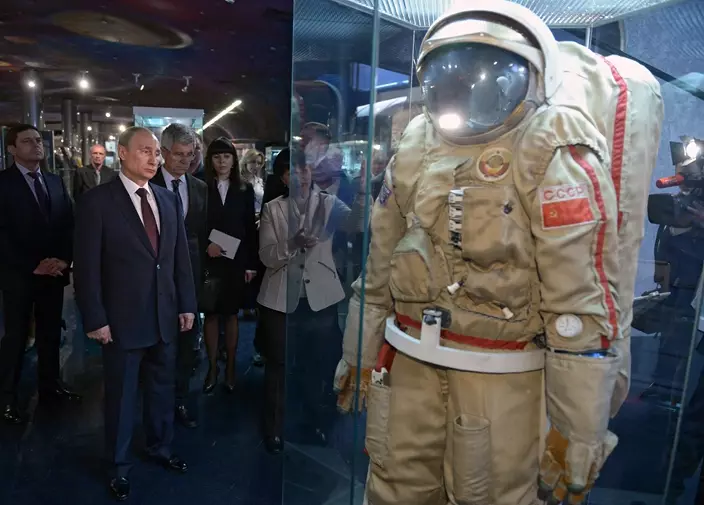
FILE - In this file photo taken on Friday, April 11, 2014, Russia's President Vladimir Putin, foreground left, looks at exhibits as he visits the Cosmonautics Memorial Museum in Moscow, Russia. Six decades after Sputnik opened the space era, Russia has struggled to build up on its Soviet-era space achievements and space research now ranks very low among the Kremlin's priorities. (Alexei Nikolsky, Sputnik, Kremlin Pool Photo via AP, File)
Amid massive spending on Vostochny, whose future remains unclear, some have criticized Roscosmos for cutting corners on personnel. Cosmonaut Maxim Surayev, who now serves as a lawmaker, lamented the poor conditions for future space crews at the Star City training center outside Moscow.
"It's wrong when, instead of fulfilling their task to prepare for space flight, they have to find side jobs and a place to live," Surayev said in parliament.
Several veteran cosmonauts were forced to retire earlier this year amid vicious infighting at Star City. One of the retirees was Gennady Padalka, who holds the world record for the longest time in orbit — 879 days over five space missions.
In a letter to the media, Padalka urged authorities to fire the director of Star City to prevent the facility from falling into "complete ruin."
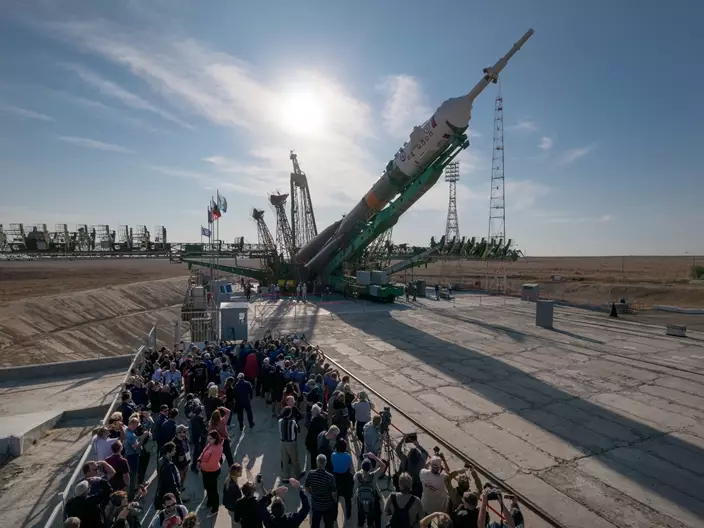
FILE- In this file photo taken on Sunday, Sept. 10, 2017, Russia's Soyuz-FG booster rocket with the Soyuz MS-06 space ship that will carry new crew to the International Space Station (ISS) being raised at the launch pad at the Russian leased Baikonur cosmodrome, Kazakhstan. Six decades after Sputnik opened the space era, Russia has struggled to build up on its Soviet-era space achievements and space research now ranks very low among the Kremlin's priorities. (AP Photo/Dmitri Lovetsky, file)
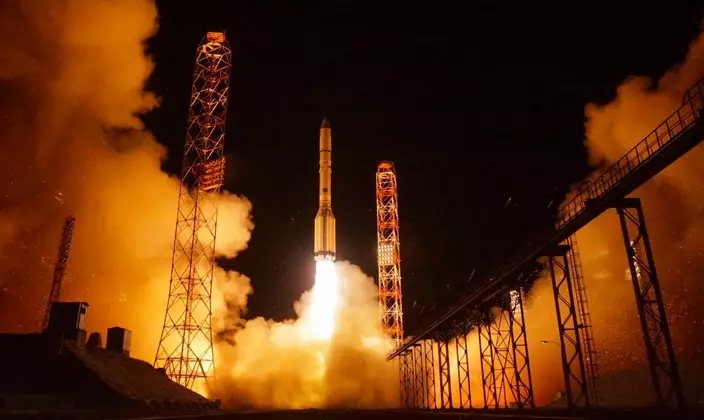
FILE -In this file photo taken on Tuesday, Sept. 12, 2017, The Proton-M rocket booster blasts off at the Russian leased Baikonur cosmodrome, Kazakhstan. Six decades after Sputnik opened the space era, Russia has struggled to build up on its Soviet-era space achievements and space research now ranks very low among the Kremlin's priorities. (AP Photo/Dmitri Lovetsky, File)




